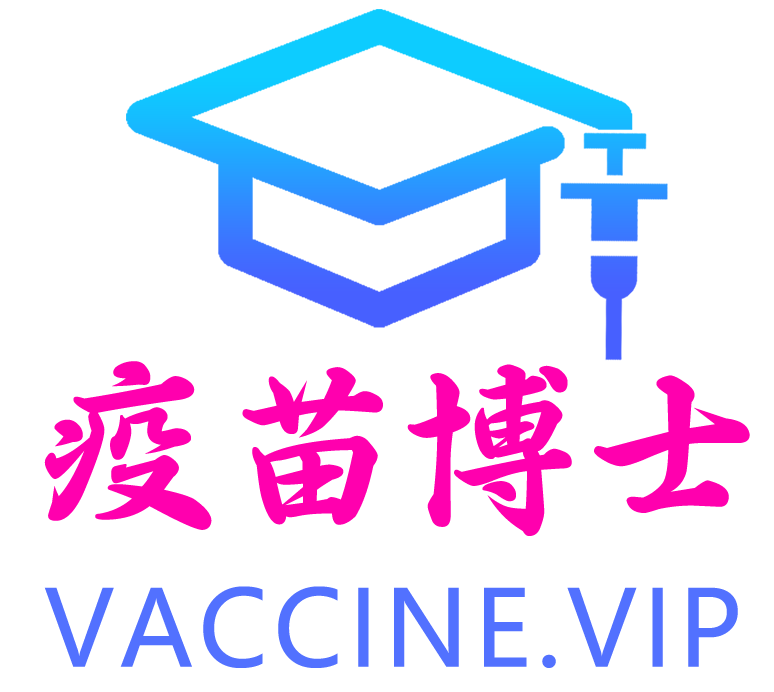疫苗和自闭症:你应该知道什么
一些家长担心疫苗会导致自闭症。他们关注的焦点集中在三个方面:麻腮风联合疫苗(MMR);硫柳汞,一种含汞的
以前包含在几种疫苗中的防腐剂;以及婴儿过早接受太多疫苗的观念。
问:自闭症的症状是什么?
A.自闭症的症状通常出现在生命的最初几年,包括行为、社交技能和交流方面的困难。具体来说,自闭症儿童可能很难与父母、兄弟姐妹和其他人进行社交互动;过渡有困难,需要常规;从事重复性的行为,如手拍打或摇摆;表现出对活动或玩具的专注;对噪音和声音更加敏感。自闭症谱系障碍导致的症状类型和严重程度各不相同,因此两个自闭症儿童可能不会受到完全相同的影响。
什么导致了自闭症?
A.所有儿童患自闭症的具体原因尚不清楚。但有一点是清楚的:自闭症谱系障碍是高度遗传的。研究人员通过研究双胞胎发现了这一点。他们发现,当一个同卵双胞胎患有自闭症时,第二个双胞胎患自闭症的可能性大于90%。但是当一个异卵双胞胎患有自闭症时,第二个双胞胎患自闭症的几率小于10%。因为同卵双胞胎有相同的基因,而异卵双胞胎没有,这些研究证明了自闭症的遗传基础。研究人员已经成功识别了一些导致自闭症的特定基因。
一些父母想知道环境因素——定义为除遗传因素以外的任何因素——是否会导致自闭症。有可能。例如,研究人员发现,镇静剂沙利度胺如果在怀孕早期使用,会导致自闭症。此外,如果孕妇在怀孕早期感染了风疹病毒(德国麻疹),其婴儿更有可能患有自闭症。
问:MMR疫苗会导致自闭症吗?
A.不是。1998年,一位名叫安德鲁·韦克菲尔德的英国研究人员提出了MMR疫苗可能导致自闭症的观点。在医学杂志《柳叶刀》上,他报道了八名儿童在接种MMR疫苗后不久出现自闭症和肠道问题的故事。为了确定维克菲尔德的怀疑是否正确,研究人员进行了一系列研究比较了数十万接种过MMR疫苗的儿童和数十万从未接种过疫苗的儿童。他们发现两组患自闭症的风险是一样的。MMR疫苗不会导致自闭症。
一些担心MMR疫苗安全性的父母停止给他们的孩子接种疫苗。随着免疫接种率的下降,特别是在英国,以及在某种程度上在美国,麻疹和腮腺炎的爆发导致了本来可以预防的住院和死亡。
问:硫柳汞会导致自闭症吗?
A.不会。多项研究表明,疫苗中的硫柳汞不会导致自闭症。硫柳汞是一种含汞防腐剂,用于疫苗中以防止污染。1999年,专业团体呼吁从疫苗中去除硫柳汞作为预防措施。不幸的是,除了一些流感多剂量制剂之外,硫柳汞在所有制剂中的突然去除疫苗吓到了一些家长。临床医生也被这个建议搞糊涂了。
自从硫柳汞被移除后,已经进行了几项研究来确定硫柳汞是否会导致自闭症。数十万接种了含硫柳汞疫苗的儿童与数十万接种了不含硫柳汞的疫苗的儿童进行了比较。结果很清楚:两组患自闭症的风险相同;疫苗中的硫柳汞不会导致自闭症。
问:自闭症是因为儿童过早接受了太多疫苗导致的吗?
A.几个事实表明,婴儿不太可能因为过早注射太多疫苗而不知所措。
首先,在获得许可之前,新疫苗总是单独测试,或者与现有疫苗联合测试。这些研究确定新疫苗是否会改变现有疫苗的安全性和有效性,以及反过来,现有疫苗是否会影响新疫苗。这些研究称为伴随使用研究,每次在现有疫苗接种计划中增加新疫苗时都要进行。
第二,尽管在过去的一个世纪里疫苗的数量急剧增加,但疫苗中免疫成分的数量实际上却减少了。一百年前,儿童只接受一种天花疫苗。天花疫苗含有大约200种免疫成分。今天,随着蛋白质纯化和重组DNA技术的进步,给幼儿接种的14种疫苗仅含有大约150种免疫成分。
第三,与婴儿每天通常遇到的情况相比,疫苗带来的免疫挑战微不足道。子宫是无菌的,不含细菌、病毒、寄生虫或真菌。但是当婴儿离开子宫进入这个世界时,他们立即被生活在他们鼻子,喉咙,皮肤和肠道内层的数万亿细菌所占据。每种细菌包含2000到6000种免疫成分。婴儿通常会对这些细菌产生免疫反应,以防止它们进入血液并造成伤害。与来自环境的挑战相比,疫苗带来的挑战微不足道。
第四,儿童对免疫挑战有巨大的反应能力。因其工作获得诺贝尔奖的分子生物学家Susumu Tonegawa表明,人们有能力制造10亿到1000亿种不同类型的抗体。考虑到现代疫苗中包含的免疫成分的数量,保守的估计是婴儿具有免疫原性一次对大约10,000种不同疫苗产生反应的能力。虽然这听起来是一个巨大的数字,但当你考虑到婴儿在他们的环境中面临的来自细菌的挑战的数量时,它不是。
这是理解疫苗免疫挑战和环境自然挑战之间规模差异的另一种方式。生活在身体表面的细菌数量是以克来计量的(一克大约是一茶匙水的五分之一)。疫苗中包含的免疫成分的量以微克或纳克(百万分之一或十亿分之一克)计量。
问:这些研究是否表明MMR疫苗或硫柳汞都不会导致自闭症,足以检测出少数儿童的问题?
A.显示MMR疫苗和硫柳汞都不会导致自闭症的研究,称为流行病学研究,非常敏感。例如,流行病学研究表明,1998年至1999年在美国使用的轮状病毒疫苗导致每10,000名疫苗接种者中有一人发生肠梗阻;麻疹疫苗导致每25,000名接受者中有一人的止血所需细胞(血小板)数量减少;1976年美国使用的一种流感(猪流感)疫苗导致了一种叫做格林-巴利综合征的瘫痪,每100,000个接受者中就有一个。
在美国,大约每59名儿童中就有一名被诊断患有自闭症谱系障碍。即使疫苗只在1%的自闭症儿童中导致自闭症,这个问题也很容易被流行病学研究发现。
问:如果我担心疫苗会导致自闭症,那么推迟或拒绝给宝宝接种疫苗会有什么危害?
迈克尔·史密斯和查尔斯·伍兹的一项研究发现,与父母选择推迟接种疫苗的儿童相比,在出生后第一年完全接种疫苗的儿童患自闭症的可能性并不大。此外,所有的证据表明疫苗不会导致自闭症,所以推迟或停止接种疫苗不会降低自闭症的风险;这只会延长儿童面临疫苗可预防疾病风险的时间。其中一些疾病,如水痘、百日咳和肺炎球菌(会导致血流感染、肺炎和脑膜炎)仍然相当常见。推迟或停止接种疫苗只会增加儿童遭受不必要的严重甚至致命感染风险的时间。
参考
自闭症参考文献
Alarcon M, Abrahams BS, Stone JL, et. al. Linkage, association, and gene-expression analyses identify CNTNAP2 as an autism-susceptibility gene. Am J Hum Genet. 2008;82(1):150-159.
Arking DE, Cutler DJ, Brune CW, et. al. A common genetic variant in the neurexin superfamily member CNTNAP2 increases familial risk of autism. Am J Hum Genet. 2008;82(1):160-164.
Bailey A, LeCouteur A, Gottesman I, et al. Autism as a strongly genetic disorder: evidence from a British twin study. Psychol Med. 1995;25:63-77.
Bauman M. Autism: clinical features and neurological observations. In: Tager-Flusberg H, ed. Neurodevelopmental Disorders. Cambridge, MA: The MIT Press;1999;383-399.
Chess S, Fernandez P, Korn S. Behavioral consequences of congenital rubella. J Pediatr. 1978;93:699-703.
Folstein S, Rutter M. Infantile autism: a genetic study of 21 twin pairs. J Child Psychol Psychiatry. 1977;18:297-321.
Gai X, Xie HM, Perin JC, et al. Rare structural variation of synapse and neurotransmission genes in autism. Mol Psych. 2011; 1-10.
Glessner JT, Wang K, Cai G, Korvatska O, et al. Autism genomewide copy number variation reveals ubiquitin and neuronal genes. Nature. 2009;459:569-573.
International Molecular Genetic Study of Autism Consortium (IMGSAC). A genomewide screen for autism: strong evidence for linkage to chromosomes 2q, 7q, and 16p. Am J Hum Genet. 2001;69:570-581.
Moessner R, Marshall CR, Sutcliffe JS, et al. Contribution of SHANK-3 mutations to autism spectrum disorder. Am J Hum Genet. 2007;81:1289-1297.
Rodier PM. The early origins of autism. Sci Am. 2000;282:56-63. Smith MJ and Woods CR. On-time vaccine receipt in the first year does notadversely affect neuropsychological outcomes. Pediatrics. 2010;125(6): 1134-1141.
Strömland K, Nordin V, Miller M, Akerström B, Gillberg C. Autism in thalidomide embryopathy: a population study. Dev Med and Child Neurol. 1994;36:351-356.
Wang K, Zhang H, Ma D, Bucan M, et al. Common genetic variants on 5p14.1 associate with autism spectrum disorders. Nature. 2009;459:528-533.
Wassink TH, Piven J, Vieland VJ, et al. Evidence supporting WNT2 as an autism susceptibility gene. Am J Med Genet. 2001;105:406-413.
自闭症和疫苗参考
Afzal MA, Ozoemena LC, O’Hare A, et al. Absence of detectable measles virus genome sequence in blood of autistic children who have had their
MMR vaccination during the routine childhood immunization schedule of UK. J Med Virol 2006;78:623-630.
Dales L, Hammer SJ, Smith NJ. Time trends in autism and in MMR immunization coverage in California. JAMA. 2001;285:1183-1185.
Davis RL, Kramarz P, Bohlke K, et al. Measles-mumps-rubella and other measles-containing vaccines do not increase the risk for inflammatory
bowel disease: a case control study from the Vaccine Safety Datalink project. Arch Pediatr Adolesc Med. 2001;155:354-359.
DeStefano F, Bhasin TK, Thompson WW, Yeargin-Allsopp M, Boyle C. Age at first measles-mumps-rubella vaccination in children with autism and
school-matched control subjects: a population-based study in metropolitan Atlanta. Pediatrics. 2004;113:259-266.
DeStefano F, Chen RT. Negative association between MMR and autism. Lancet. 1999;353:1986-1987.
Farrington CP, Miller E, Taylor B. MMR and autism: further evidenceagainst a causal association. Vaccine. 2001;19:3632-3635.
Fombonne E, Chakrabarti S. No evidence for a new variant of measlesmumps-rubella-induced autism. Pediatrics. 2001;108:E58.
Fombonne E, Cook EH Jr. MMR and autistic enterocolitis: consistent epidemiological failure to find an association. Mol Psychiatry. 2003;8:
133-134.
Honda H, Shimizu Y, Rutter M. No effect of MMR withdrawal on the incidence of autism: a total population study. J Child Psychol Psychiatry. 2005;46(6):572-579.
Hornig M, Briese T, Buie T. et al. Lack of association between measles virus vaccine and autism with enteropathy: a case-control study. PLoS ONE
2008;3(9):e3140.Kaye JA, del Mar Melero-Montes M, Jick H. Mumps, measles, and rubella vaccine and the incidence of autism recorded by general practitioners: a
time trend analysis. BMJ. 2001;322:460- 463.
Madsen KM, Hviid A, Vestergaard M, et al. A population-based study of measles, mumps and rubella vaccination and autism. N Engl J Med. 2002;347:1477-1482.
Marshall JA, Buikema A, et al. Autism occurrence by MMR vaccine status among US children with older siblings with and without autism. JAMA. 2015;313(15):1534-1540.
Peltola H, Patja A, Leinikki P, Valle M, Davidkin I, Paunio M. No evidence for measles, mumps and rubella vaccine associated inflammatory bowel disease or autism in a 14-year prospective study. Lancet. 1998;351:1327-1328.
Smeeth L, Cook C, Fombonne E, et al. MMR vaccination and pervasive developmental disorders: a case-control study. Lancet 2004;364;963-969.
Taylor B, Miller E, Farrington CP, et al. Autism and measles, mumps and rubella vaccine: no epidemiological evidence for a causal association. Lancet. 1999;353:2026-2029.
Taylor LE, Swerdfeger AL, Eslick GD. Vaccines are not associated with autism: an evidence-based meta-analysis of case-control and cohort studies. Vaccine 2014;32:3623-3629.
Uchiyama T, Kurosawa M, Inaba Y. MMR-vaccine and regression in autism spectrum disorders: negative results presented from Japan. J Autism Dev Disord 2007;37:210-217.
Wilson K, Mills E, Ross C, McGowan J, Jadad A. Association of autistic spectrum disorder and the measles, mumps and rubella vaccine: a systematic review of current epidemiological evidence. Arch Pediatr Adolesc Med. 2003;157:628-634.
免疫能力和太多疫苗参考
DeStefano F, Price CS, Weintraub ES. Increasing exposure to antibodystimulating proteins and polysaccharides in vaccines is not associated with
risk of autism. J Pediatr 2013;163:561-567.
Glanz JM, Newcomer SR, Daley MF, DeStefano F, et al. Association between estimated cumulative vaccine antigen exposure through the first 23 months of life and non-vaccine-targeted infections from 24 to 47 months of age. JAMA 2018;319(9):906-913.
Hviid A, Wholfahrt J, Stellfeld M, et al. Childhood vaccination and nontargeted infectious disease hospitalization. JAMA 2005;294(6):699-705.
Iqbal S, Barile JP, Thompson WW, and DeStefano F. Number of antigens in early childhood vaccines and neuropsychological outcomes at age 7-10 years. Pharmacoepidemiol Drug Saf 2013;22:1263-1270.
Offit PA, Quarles J, Gerber MA, et al. Addressing parents’ concerns: do multiple vaccines overwhelm or weaken the infant’s immune system? Pediatrics. 2002;109:124-129.
Sherrid AM, Ruck CE, Sutherland D, et al. Lack of broad functional differences in immunity in fully vaccinated vs. unvaccinated children. Pediatr Res 2017;81(4):601-608.
Smith MJ and Woods CR. On-time vaccine receipt in the first year does not adversely affect neuropsychological outcomes. Pediatrics 2010;125; 1134-1141..
硫柳汞参考文献
Andrews N, Miller E, Grant A, Stowe J, Osborne V, Taylor B. Thimerosal exposure in infants and developmental disorders: a retrospective cohort study in the United Kingdom does not support a causal association. Pediatrics. 2004;114:584-591.
Christensen DL, Baio J, Van Naarden Braun K, Charles J, Constantino JN, et al. Prevalence and characteristics of autism spectrum disorder among children age 8 years – Autism Developmental Disabilities Monitoring Network, 11 Sites, United States, 2012. MMWR 2016;65(3):1-23.
Fombonne E, Zakarian R, Bennett A, Meng L, McLean-Heywood D. Pervasive developmental disorders in Montreal, Quebec, Canada: prevalence and links with immunizations. Pediatrics. 2006;118:E139-150.
Heron J, Golding J. Thimerosal exposure in infants and developmental disorders: a prospective cohort study in the United Kingdom does not support a causal association. Pediatrics. 2004;114:577-583.
Hviid A, Stellfeld M, Wohlfahrt J, Melbye M. Association between thimerosal-containing vaccines and autism. JAMA. 2003;290:1763- 1766.
Madsen KM, Lauritsen MB, Pedersen CB, et al. Thimerosal and the occurrence of autism: negative ecological evidence from Danish population-based data. Pediatrics. 2003;112:604-606.
Picciotto IH, Green PG, Delwiche L, et. al. Blood mercury concentrations in CHARGE study children with and without autism. Environ Health Perspect. 2010;118(1):161-166.
Price CS, Thompson WW, Goodson B, et. al. Prenatal and infant exposure to thimerosal from vaccines and immunoglobulins and risk of autism. Pediatrics. 2010;126:656-664.
Schechter R, Grether J. Continuing increases in autism reported to California’s developmental services system: mercury in retrograde. Arch Gen Psychiatry. 2008;65:19-24.
Stehr-Green P, Tull P, Stellfeld M, Mortenson PB, Simpson D. Autism and thimerosal-containing vaccines: lack of consistent evidence for an association. Am J Prev Med. 2003;25:101-106.
Thompson WW, Price C, Goodson B, et al. Early thimerosal exposure and neuropsychological outcomes at 7 to 10 years. N Engl J Med 2007;357(13):1281-1292.
Tozzi AE, Bisiacchi P, Tarantino V, et. al. Neuropsychological performance 10 years after immunization in infancy with thimerosal-containing vaccines. Pediatrics. 2009;123(2):475-482.
Verstraeten T, Davis RL, DeStefano F, et al. Study of thimerosal-containing vaccines: a two-phased study of computerized health maintenance organization databases. Pediatrics. 2003;112:1039-1048.
Learn more: vaccine.chop.edu
该信息由费城儿童医院疫苗教育中心提供。该中心是父母和医疗保健专业人员的教育资源,由致力于传染病研究和预防的科学家、医生、母亲和父亲组成。疫苗教育中心由费城儿童医院捐赠的椅子资助。该中心没有得到制药公司的支持。2019费城儿童医院,版权所有。18067-11-18.




